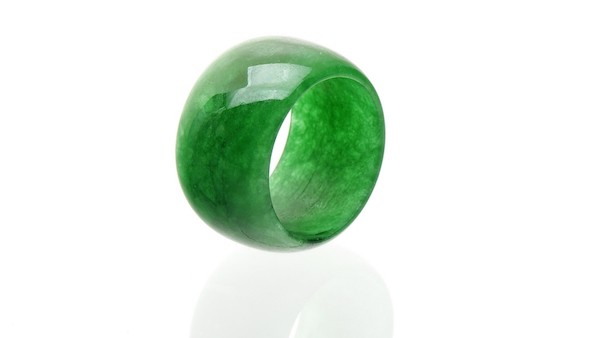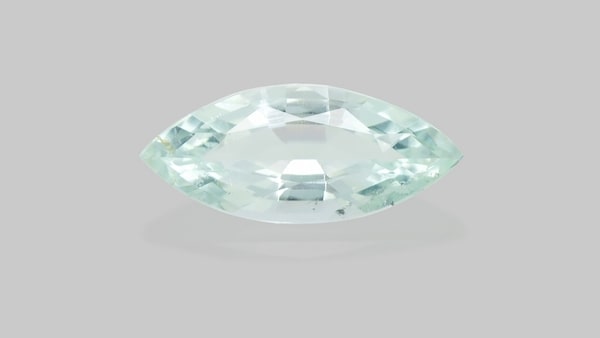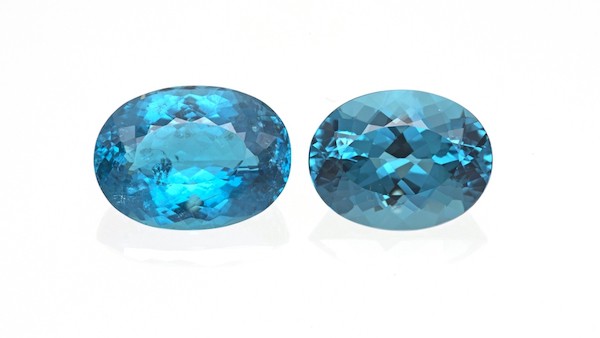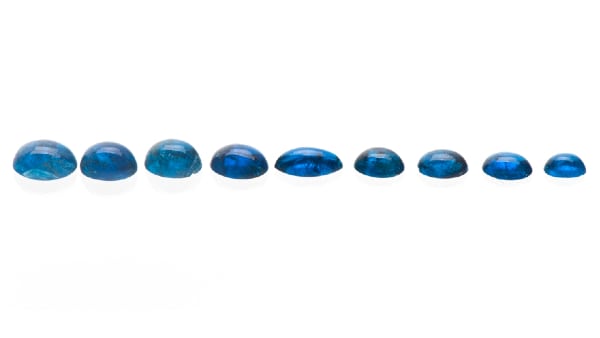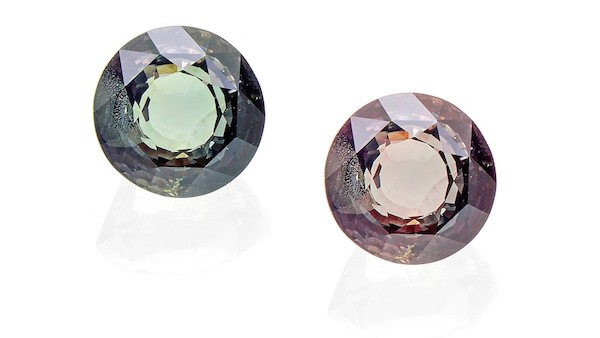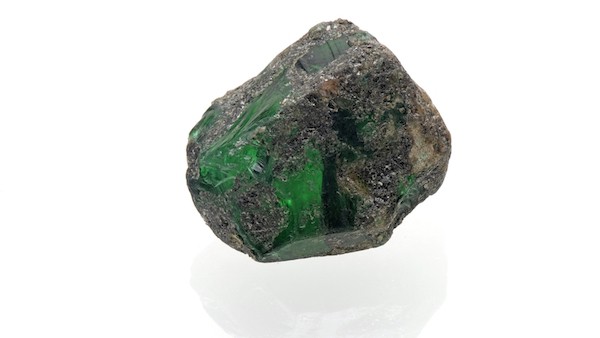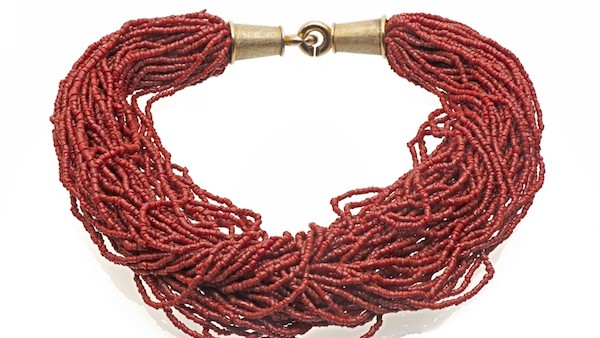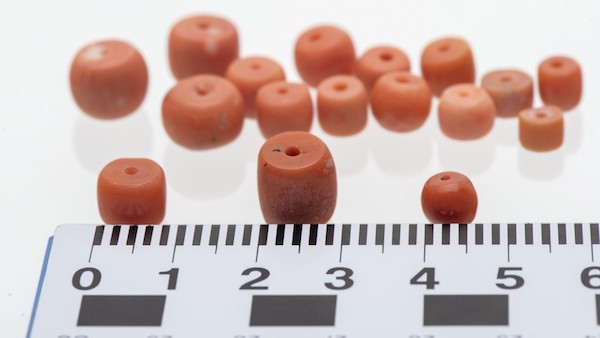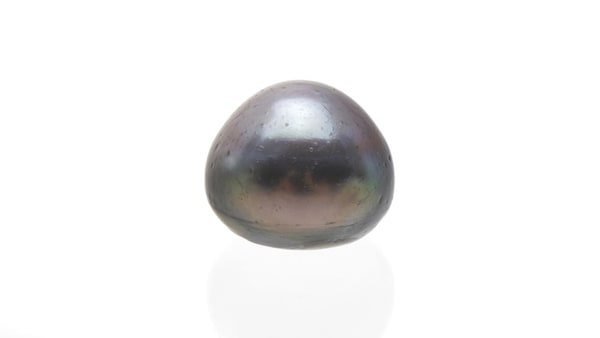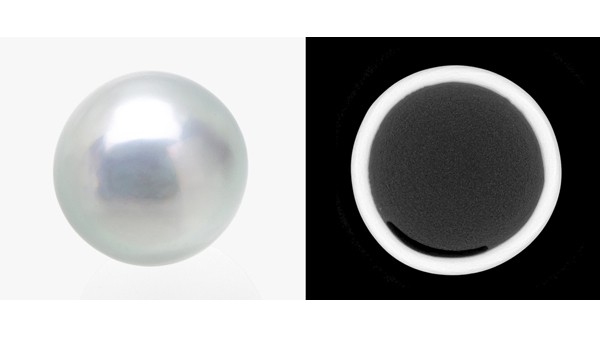Jadeite: impregnated and dyed
Jadeite-jade of saturated emerald green colour is highly valued in Asia. It is therefore not astonishing to see in the market either heavily treated jadeite-jade or even imitations made of different minerals which pretend to be fine quality jadeite-jade of “Imperial green” colour.
Saturation too low for Paraiba tourmaline
Copper-bearing tourmaline, also known as Paraiba tourmaline in the trade, may come in a range of colours from blue to green. Similarly, the colour saturation of such copper-bearing tourmalines may vary largely, from saturated and vibrant – also known as “electric” or “neon” – to very light coloured.
A perfect match: Paraiba tourmaline and Indicolite tourmaline
A few months ago, a client submitted to SSEF two tourmalines of attractive and matching shape, size and colour, both supposedly being Paraiba tourmalines (Figure 1). Chemical analyses and absorption spectra (UV-Vis-NIR) quickly revealed that their composition and colour cause was much less matching than their v
Blue surprise: apatite and not Paraiba tourmaline
Last summer, the SSEF received a series of nine small blue cabochons ranging in weight from 0.4 to 1.5 ct. The client assumed that these stones were Paraiba tourmalines from a very early production of the Sao José da Batahla mine in the state of Paraiba in Brazil, as they were safeguarded for several decades
An interesting chrysoberyl-alexandrite combination
The mineral chrysoberyl BeAl2O4 is an attractive gemstone that shows a wide variation of colours mostly ranging from yellow to green and brownish green to dark brown. These colours are mainly due to the presence of iron and sometimes vanadium as chromophore elements inside the crystal lattice structure.
Dyed quartz imitating emerald
From time to time, we receive some oddities for testing, such as the rough “emerald”, reportedly originating from Africa and submitted by a client for testing. Already a quick visual examination made it clear that this was not an emerald. The surface was dominated by conchoidal fractures and covered partly
Happy hour with soda and lime: glass imitating coral
Recently, a necklace was submitted to SSEF for coral testing. Already a first microscopic inspection revealed that this item in fact consisted of numerous tiny glass beads, visually imitating coral very well (e.g. corallium rubrum). The most obvious microscopic feature was the presence of air bubbles in these g
Novel Coral-ID method used on samples seized by swiss customs
In 2022, an international research group led by scientists from the Swiss Gemmological Institute SSEF and the University of Zurich’s Institute of Forensic Medicine (IRM) reported a breakthrough in precious coral jewellery traceability, through the use of a novel forensically validated genetic technique called
Saltwater pearl with barium
Recently, the SSEF received a button-shaped pearl of 7.5 ct for testing. Based on X-ray radiography and a UV-Vis-NIR reflectance spectrum, the pearl was easily identified as a saltwater natural pearl from the species Pinctada margaritifera.
Cultured pearl with unconventional bead material
Recently, we received a round pearl for testing which exhibited an excellent surface quality and a remarkable size of 24 mm in diameter. Interestingly, its weight of 60 ct was rather low for such a pearl (resulting in a calculated specific gravity of approx. 1.61 instead of 2.715 considered standard for a pearl
